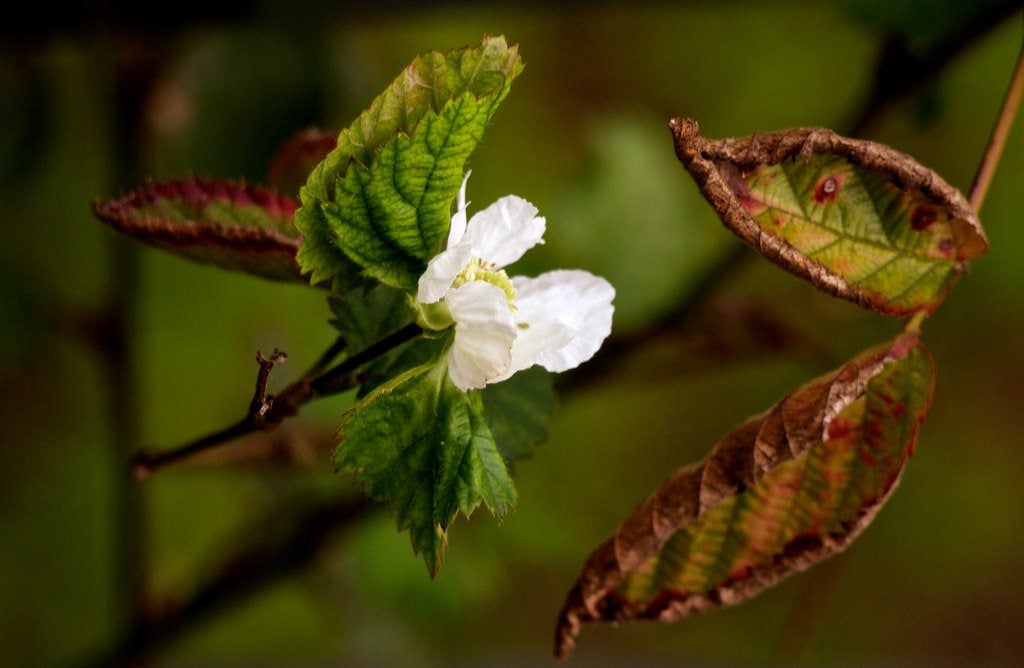Boysenberry Disease Info: Learn How To Treat A Sick Boysenberry Plant


Boysenberries are delightful to grow, giving you a harvest of juicy, sweet berries in the late summer. This cross between raspberry and blackberry varieties is not as common or popular as it once was, but it should be. You can grow this berry in your yard, but watch out for common diseases.
Diseases of Boysenberries
Boysenberry plants are susceptible to most of the same diseases as blackberries and dewberries. Know what the common boysenberry diseases are so you can watch for the signs and catch them early for management and treatment.
- Cane and leaf rust. This fungal disease causes yellow pustules to develop on the leaves and canes of boysenberry plants. Over time, the canes and leaves will dry and crack.
- Anthracnose. Another fungal infection, this one first manifests as small, purple spots on leaves and new shoots. On canes, they will grow larger and turn gray. There may also be dieback.
- Spur blight. The fungus that causes spur blight develops as purple blotches on canes. New shoots and buds will die back.
- Orange rust. Small, yellow spots on leaves are the first signs of orange rust, a fungal disease. Eventually, they grow into pustules that produce orange spores.
- Fruit rot. This occurs when the ripening fruit rots on the canes. Overripe berries are most susceptible.
How to Treat a Sick Boysenberry
Many common boysenberry problems can be easily managed in the home garden, especially if you are looking out for symptoms and catch them early or use preventative measures: If you see the signs of cane and leaf rust, simply prune out the affected canes. Burn them to avoid spreading the infection. The infection should not greatly affect your harvest. Anthracnose may cause die back, and there is no good treatment for it. A spray with fungicide in the late dormant period can help prevent it, though. With spur blight, you can remove and burn the affected canes. Also consider using a copper fungicide in the bud stage to treat the infection. Orange rust is a damaging and systemic infection. If allowed to spread too far, your plant will not produce any berries. Unfortunately, there is no fungicide that will treat orange rust, so you need to remove and destroy damaged plants, preferably before the pustules burst. With fruit rot, prevention is best, although fungicide can be used to save berries that are starting to rot. Prevention includes spacing and pruning plants for air circulation and harvesting berries before they over-ripen. Treatment and management is possible for most boysenberry problems, but prevention is always best. Use certified disease-free plants, provide plenty of space for air circulation, and make sure the soil drains well. When watering, apply water at the base of canes only, to avoid excessive moisture that can lead to disease.
Sign up for the Gardening Know How newsletter today and receive a free copy of our e-book "How to Grow Delicious Tomatoes".

Mary Ellen Ellis has been gardening for over 20 years. With degrees in Chemistry and Biology, Mary Ellen's specialties are flowers, native plants, and herbs.